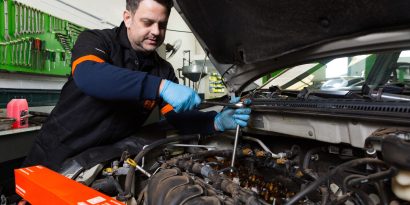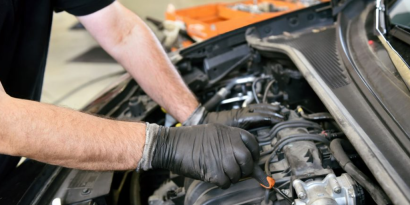In a mechanical workshop’s routine, it is essential to understand the different engine operating cycles in order to offer an excellent service and make sure you don’t leave your clients in the lurch. In broad terms, this is why different models and types of cars use different engine cycles, with each one having their particularities, ignitions methods, and specific strategies for energic efficiency maximization.
For the professionals of the area, this represents some unique diagnostic challenges and might require more accurate repair routines; however, at the same time, understanding and mastering these differences creates a window of opportunity for the workshop to expand the types of clients and models it serves.
This is why, in this article, we will explore the main engine operating cycles — Otto cycle, Diesel cycle, Atkinson cycle, and Miller cycle —, detailing their associated characteristics, advantages, and challenges. This knowledge is essential for any Expert who wants to be in the forefront of the competitive auto repair market, so stay with us and have a good reading!
After all, which are the main engine operating cycles?
When talking about engine operating cycles, the first step is to understand they refer to the sequential steps that occur within the engine to convert the fuel’s chemical energy into mechanical energy. In real life, each type of cycle has specific characteristics that determine how these steps are performed. Here are the most common ones:
1 – Otto Cycle
Perhaps the most popular among the engine operating cycles, the Otto cycle is usually present in gasoline-powered cars. This model is characterized by four fundamental steps: intake, compression, combustion, and exhaustion. In this cycle, the air-fuel mixture ignition is caused by an electric spark generated by the spark plug.
This cycle is highly valued for its simplicity and efficiency under regular driving conditions. However, it requires the repairer to stay alert to the ignition systems, in addition to frequent maintenance of the spark plugs, in order to avoid engine failures and guarantee energy efficiency.
2 – Diesel Cycle
Mainly used in commercial cars and in some high-torque passenger cars, the Diesel cycle stands out for its compression ignition method. In this model, the air is compressed at a very higher rate than in the Otto cycle, increasing its temperature to the point of igniting the diesel when it is injected into the combustion chamber.
Known for its efficiency and durability, the Diesel cycle usually requires extra care with the fuel injection system and the pre-chamber, also requiring a regular cleaning routine for the diesel particulate filter.
3 – Atkinson Cycle
Considered to be a modification of the Otto cycle, the Atkinson cycle is frequently used in hybrid cars — and, for that reason, its presence is increasing in the global market, with it being more and more present in specialized workshops.
Its main characteristic is the intake phase prolongation, which allows higher expansion than compression, contributing for a superior energy efficiency. Cars that use this cycle usually consume less fuel, but require Experts to be aware of the peculiarities in hybrid system maintenance, which frequently combine electrical engines and combustion engines.
4 – Miller Cycle
Similar to the Atkinson cycle in terms of the search for energy efficiency, the Miller cycle also modifies the intake and compression times to decrease the required work during compression. This is a superior type of efficiency achieved by using a turbocharger or supercharger, which acts to compensate for the lower air compression in the chamber.
Although it offers a series of advantages for the driver and for the overall preservation of the engine characteristics, it is important to keep in mind that the complexity of turbocharged systems require mechanics to have a deep understanding of the components from turbocompressors and intercoolers to guarantee an adequate maintenance.
Regardless of the engine cycle, the important thing is to work safely
When operating in engines with different operating cycles, mechanics must consider several critical topics to guarantee an effective and safe work routine. In addition, using the right tools and adequate diagnostic technologies is essential to detect and solve specific problems from each model.
More than ever, workshops must be equipped with compatible diagnostic scanners and other specialized tools capable of evaluating and adjusting the engine’s components as necessary. It does not matter the car cycle you are working on, remember that a regular preventive maintenance is essential for the longevity and efficiency of the car.
This includes checking and replacing fluids, filters, spark plugs — for the Otto and Atkinson cycles — and inspecting the injection systems — especially in the Diesel and Miller cycles. In addition, specific adjustments, such as ignition time in the Otto cycle or injection pressure in the Diesel cycle, might be necessary in order to optimize the performance of the engine.
We cannot forget to mention that selecting high-quality spare parts also makes a huge difference in providing a good service, especially because using components of lower quality might not solve the problems of the car and can also cause additional damages to the engine.
Therefore, it is essential to select trustworthy suppliers with tradition in innovation that guarantee their origin and an elevated quality standard at every delivery. For example, here at RIO you find a complete catalog, with more than 6,000 parts for multiple applications and compatible with a wide range of engine operating cycles — all of this to facilitate your routine and keep your clients always satisfied!





